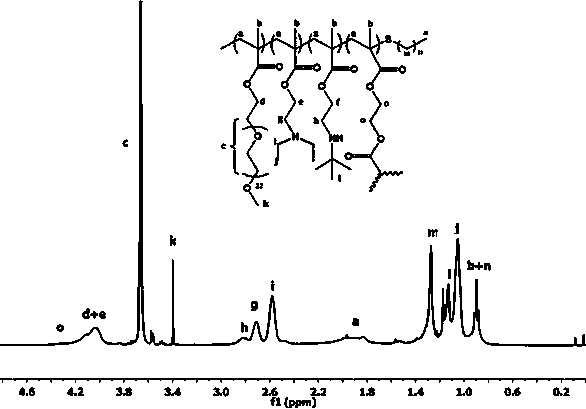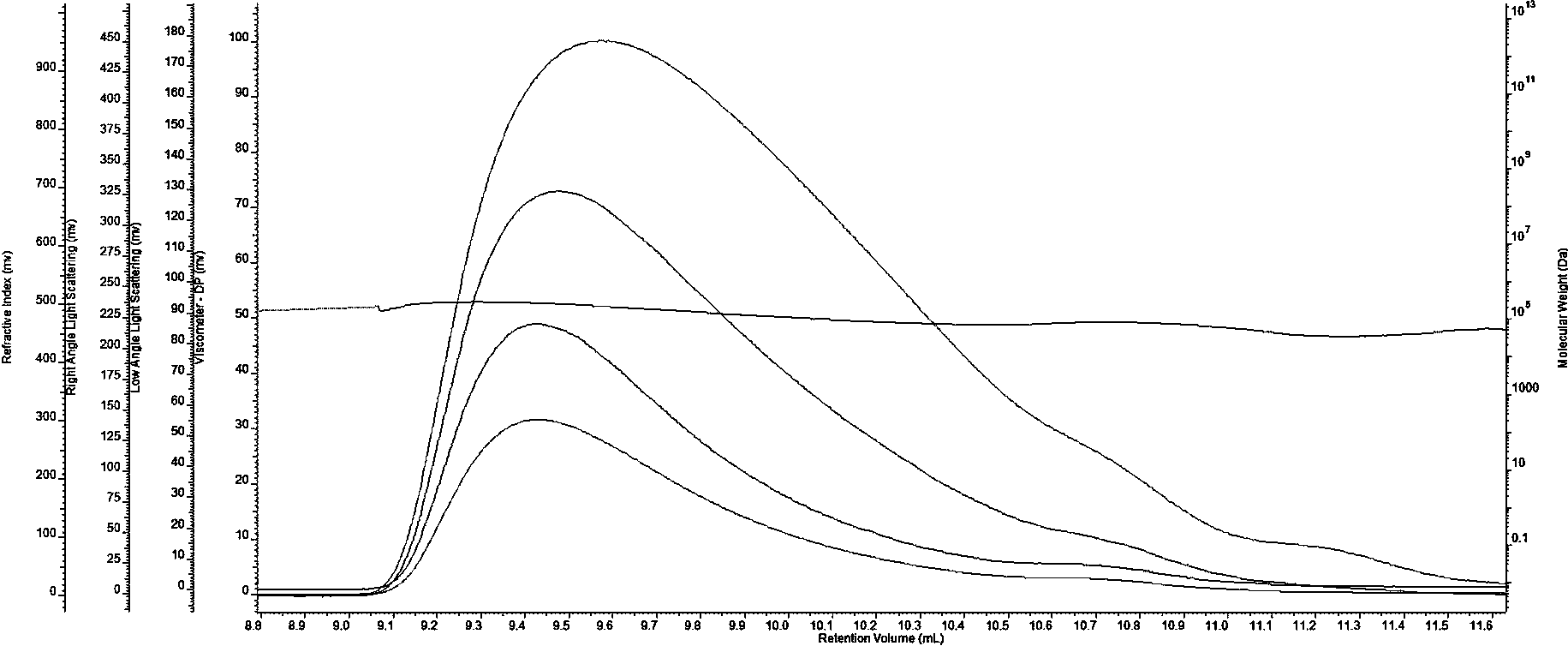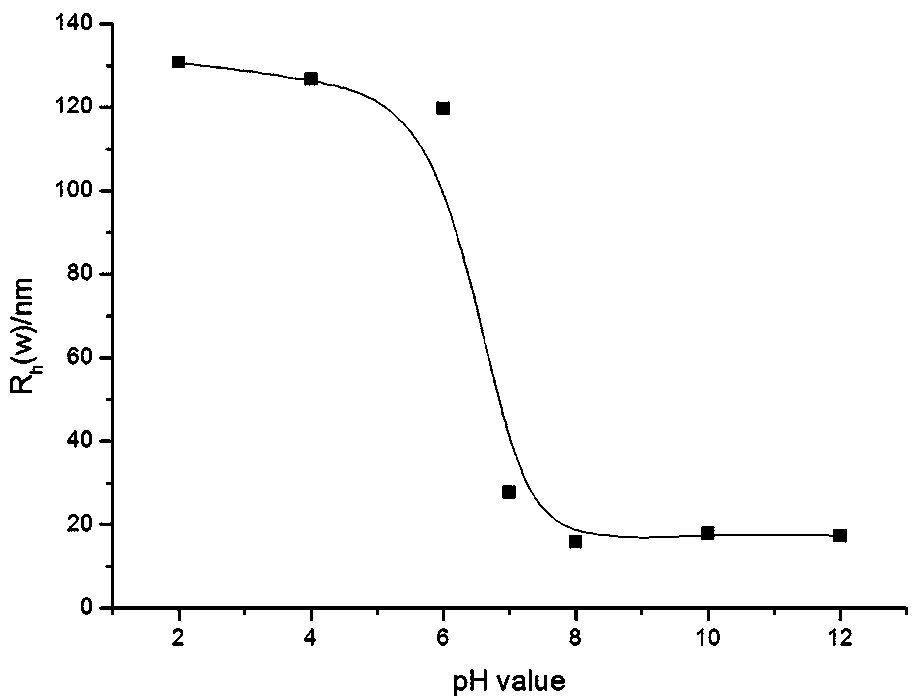Ph response graft copolymer as well as preparation method and use thereof
The technology of graft copolymer and polyethylene glycol methyl ether is applied in the field of preparation of pH-responsive graft copolymer nanoparticles, and can solve the problems of inability to know the real particle size of the particles, many post-processing steps, complicated reaction systems, and the like, Achieve good biocompatibility, simple preparation method, and meet special requirements
- Summary
- Abstract
- Description
- Claims
- Application Information
AI Technical Summary
Problems solved by technology
Method used
Image
Examples
Embodiment 1
[0037] Accurately weigh 2.20 g of PEGMA, 5.62 mL of DEAEMA, 2.03 mL of tBAEMA, 1.13 mL of EGDMA and 1.44 mL of DDT together with 80 mL of absolute ethanol into a 250 mL three-necked flask. Dissolve in 10 mL of absolute ethanol, pass nitrogen gas for 30 min to remove oxygen, pour it into the above flask and place the flask in a water bath, heat to 70°C to initiate the reaction, and stir for 48 h to complete the reaction. Under reduced pressure, use a rotary evaporator to remove most of the solvent, and then use cold n-hexane as a precipitant to remove unreacted monomers, and dry the resulting viscous liquid in a vacuum oven at 60°C for 12 h to obtain an amber viscous The liquid is Copolymer 1.
[0038] Take 20 mg of copolymer 1, dissolve it in about 0.7 mL of deuterated chloroform, and measure its H NMR spectrum, as shown in figure 1 shown. An appropriate amount of copolymer 1 was dissolved in tetrahydrofuran to prepare a solution with a concentration of 8.0 mg / mL, and then i...
Embodiment 2
[0040] Accurately weigh 2.20 g PEGMA, 5.62 mL DEAEMA, 2.03 mL tBAEMA, 1.13 mL EGDMA and 0.63 mL MPA together with 80 mL absolute ethanol and add them into a 250 mL three-necked flask, seal and ventilate nitrogen for 30 min, then dissolve 0.103 g initiator AIBN In 10 mL of absolute ethanol, pass nitrogen gas for 30 min to deoxygenate, inject it into the above-mentioned flask and place the flask in a water bath, heat to 70 °C to initiate the reaction, and stir for 48 h to complete the reaction. Under reduced pressure, use a rotary evaporator to remove most of the solvent, and then use cold n-hexane as a precipitant to remove unreacted monomers, and dry the resulting viscous liquid in a vacuum oven at 60°C for 12 h to obtain an amber viscous The liquid is Copolymer 2.
[0041] Take 20 mg of copolymer 2, dissolve it in about 0.7 mL of deuterated chloroform, and measure its H NMR spectrum, as shown in Figure 4 shown. Dissolve an appropriate amount of copolymer 2 in tetrahydrofur...
PUM
| Property | Measurement | Unit |
|---|---|---|
| particle diameter | aaaaa | aaaaa |
| radius | aaaaa | aaaaa |
Abstract
Description
Claims
Application Information
 Login to View More
Login to View More - R&D
- Intellectual Property
- Life Sciences
- Materials
- Tech Scout
- Unparalleled Data Quality
- Higher Quality Content
- 60% Fewer Hallucinations
Browse by: Latest US Patents, China's latest patents, Technical Efficacy Thesaurus, Application Domain, Technology Topic, Popular Technical Reports.
© 2025 PatSnap. All rights reserved.Legal|Privacy policy|Modern Slavery Act Transparency Statement|Sitemap|About US| Contact US: help@patsnap.com



